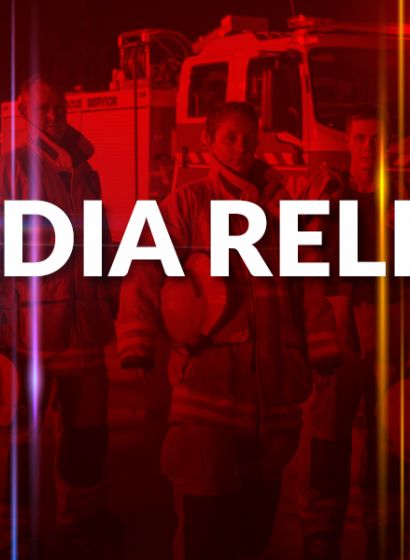Tropical Cyclone Nathan is currently moving into Arnhem Bay, west of Nhulunbuy.
Region 2 Regional Controller, Commander Bruce Porter, said that the Bureau of Meteorology advises that a cyclone WARNING is in place from Goulburn Island to Alyangula including Maningrida, Milingimbi, Elcho Island, Gapuwiyak and Nhulunbuy
A cyclone WATCH is in place from Goulburn Island to Cape Don, including Croker Island and Goulburn Island.
At 2.30pmCST, the centre of Tropical Cyclone Nathan was estimated to be 60 kilometres west of Nhulunbuy and 75 kilometres east southeast of Galiwinku and moving northwest at 14 kilometres per hour.
DESTRUCTIVE winds with gusts up to 150 kilometres per hour, extending to approximately 40 kilometres from the centre of the cyclone, are currently being experienced over the Gove Peninsula. Destructive winds will extend west to Gapuwiyak this afternoon and possibly to Elcho Island depending on how quickly the cyclone weakens.
GALES, with gusts up to 120 kilometres per hour, are occurring over northeast Arnhem Land, extending as far west as Elcho Island. Gales are expected to extend further west to Milingimbi and Maningrida during this afternoon or evening and may extend west to Cape Don overnight on Sunday or Monday morning if the system takes a more westerly track. Winds are expected to ease below gale force this later this evening along the east Arnhem Land coast.
HEAVY RAINFALL, which may lead to flash flooding, across coastal parts of northern Arnhem Land as the cyclone moves westwards.
A STORM TIDE is expected between Elcho Island and Cape Shield. Tides are likely to rise significantly above the normal high tide, with DAMAGING WAVES and DANGEROUS FLOODING.
Communities under WARNING
The Regional Controller advises that communities currently in shelter (Nhulunbuy, Gapuwiyak and Elcho Island) should remain inside until advised by local authorities that the ALL CLEAR has been given.
DO NOT drive or move about outside. You will be advised by the Regional Controller when it is safe to do so.
Shelters at Gove District Hospital and the Laynhapuy Homelands Resource Centre are open.
In Gapuwiyak, the main community shelter at Mapurru is now open and all residents have relocated there.
For residents of Galiwin’ku, the shelter at the Marthakal Workshop and Dhurrkay Building are now open with about 150 persons and 75 persons respectively. Residents relocated from Camp Elcho are in shelter at the Shepherdson College.
Residents in Ramingining and Milingimbi should expect to see gale force winds within the next 12 – 24 hours.
In Milingimbi, the Cyclone Emergency Shelter opened at 1400hrs. The shelter has been inspected and is fully functional if required. The shelter generator has been checked tested and is fully fuelled. The shelter water tank is full and holds 10,000L of water which has been tested.
Now is the time to make final preparations to your home shelter area. If you do not have accommodation constructed to the building code or are unsure of your present Accommodation you should proceed immediately to shelter with family, friends, or one of the local emergency shelters. Take your emergency kit and water with you.
A cyclone is approaching and the public shelter in the community of Milingimbi is now open. Make your decision quickly as winds are shortly expected to reach a dangerous level.
Communities under WATCH
The Regional Controller advises residents in communities under Watch from Goulburn Island to Cape Don, including Goulburn Island and Croker Island, that now is the time to finalise your emergency kit, clear your yards and balconies, and commence home shelter preparations or identify which public emergency shelter or strong building to use. You should now have your emergency kit complete and ready. DO NOT PROCEED TO PUBLIC EMERGENCY SHELTERS UNTIL ADVISED TO DO SO.
“If you DO NOT have accommodation constructed to the Building Code or are unsure of your present accommodation, you should determine NOW where you will shelter. This may include arranging to shelter with family, friends or in public emergency shelters, or strong buildings, where available in your community,” said Commander Porter.
This advice is issued to allow you sufficient time in which to take the necessary precautions before winds reach a dangerous level.
Please ensure that friends, family and neighbours have heard and understood this message, particularly new arrivals to the area.
Further advice on cyclone emergencies is available at www.secureNT.nt.gov.au
Removed from zone
Groote Eylandt is now considered safe for people to leave their shelter. Initial indications are there are no significant damage or other issues resulting from the cyclone. The three shelters are now closed as people have returned home.
Flood Watch Warning
Rain with heavy falls is forecast to develop over North West Coastal Rivers from Tuesday, persisting for 2 to 3 days. These falls are expected to lead to significant stream rises which may affect road access at times.
The Northern Territory Emergency Service advises that people should:
- Stay away from flooded drains, rivers, streams and waterways
- Avoid driving into water of unknown depth and current
- Stop children playing in or near floodwaters
- Create your own sandbags if there is flooding, by using pillowcases and shopping bags filled with sand and place them around doorways to protect your home
- Be careful of fallen power lines. They are dangerous and should always be treated as live
For emergency help in floods, storms and cyclones call 132 500.
General
Commander Porter said that the Power and Water Corporation advises that building occupants should fill bath tubs and water containers with water before the cyclone arrives. Do not use chemical or fuel containers to store drinking water. After the cyclone has passed as a precautionary measure, it is recommended that tap water used for drinking and oral hygiene be boiled first and allowed to cool.
Power stations in the communities will continue to operate as long as it is safe to do so.
After a cyclone, downed power lines might be live and lethal. Stay away and stay safe.
After a cyclone you should flush toilets with a bucket to reduce the likelihood of blockages.
Further information can be found about how to prepare can be found at www.secureNT.nt.gov.au
For the latest Bureau of Meteorology Advice go to www.bom.gov.au


